I’ve done a lot of thinking about families over the last six years. The origin place, tribal unit, and genetic pool we all spring from. Sometimes we love our families, sometimes we loathe them, and sometimes we know almost nothing about them. But whether in abundance or absence, acceptance or rejection, joy or trauma, our families inescapably shape who we are. And that doesn’t only go for our immediate family–our parents, siblings, partners, and children. Oh, no… this influence stretches far back into the generations and through dozens of people we will never know personally. Because even though these many ancestors may not touch our lives directly, their experiences, stories, and DNA have a profound impact on the people we become.
When I first met Ryan Woods, President & CEO of American Ancestors, back in Spring 2019, I didn’t really understand the profundity of these ideas or, indeed, the organization he represented. I knew it was old (1845), had a collection (archives and objects), and was focused on genealogy. I also knew that it was housed in an old bank building on Newbury Street in Boston, had acquired the building next door, and hired an architect Schwartz/Silver to design the organization’s first ever public facing visitor center. But it wasn’t until I started a six month long interpretive planning process to explore what that experience might be about, that I began to comprehend that American Ancestors is a purveyor, champion, and keeper of every American’s family story. And it was TEA’s job to introduce the world to the “Big Idea” we developed together.
Everyone has a story worth telling and worth hearing; when we are inspired and supported to ask questions and seek answers about our family histories, we can gain a better understanding of ourselves, of others, and of the shared human experience.
Unpacking and showcasing this idea turned out to be a big job. By late 2021, TEA was off and running revising the Master Interpretive Plan, hiring our incredible content and design team which included Susannah Brougham, Beth Malandain, and Cheryl Burke of Theory One Design, and digging into experience design.


We assembled and reviewed moodboards, finishes, and color palettes. We crafted and recrafted design/device briefs. We traveled to FamilySearch in Utah for inspiration. We stood outside in sweltering July heat to prototype the interactive map which would become the introductory experience. We commissioned local artists Fred H.C. Liang, Yuko Okabe, Sisters in Stitches Joined by the Cloth, and Pamela Hersch to produce original, jawdropping artworks.





We interviewed and recorded American Ancestors member stories with our friends at the Loop Lab. We talked a lot about DNA and how to represent it graphically with Colorbox Industries. We got a painting x-rayed to see if it revealed a secret. We surveyed staff, members, and stakeholders and assembled hundreds of questions for the Wall of Questions. We designed, rendered, and designed again.

We worked with staff to select collection objects, buy yearbooks on ebay, and annotate hundreds of digital records. We tested interactives with Petricore Games on the floor of the Museum of Science. We bit our lips along with everyone else as Shawmut Design & Construction opened the building. We worked shoulder to shoulder with Mystic Scenic, Olsen Images, Available Light as casework, graphics, and lighting were installed.

And, last week, we celebrated with the dedicated American Ancestors staff, city and state dignitaries, board members, and the extraordinarily charming Henry Louis Gates Jr.
The experience we dreamed up and manifested together is about curiosity, connection, and storytelling. It’s about pride of place, questions that spark a lifelong passion, and the unique beauty of objects that carry our most precious narratives. But most of all, it’s about people. And we couldn’t be more proud of that.






